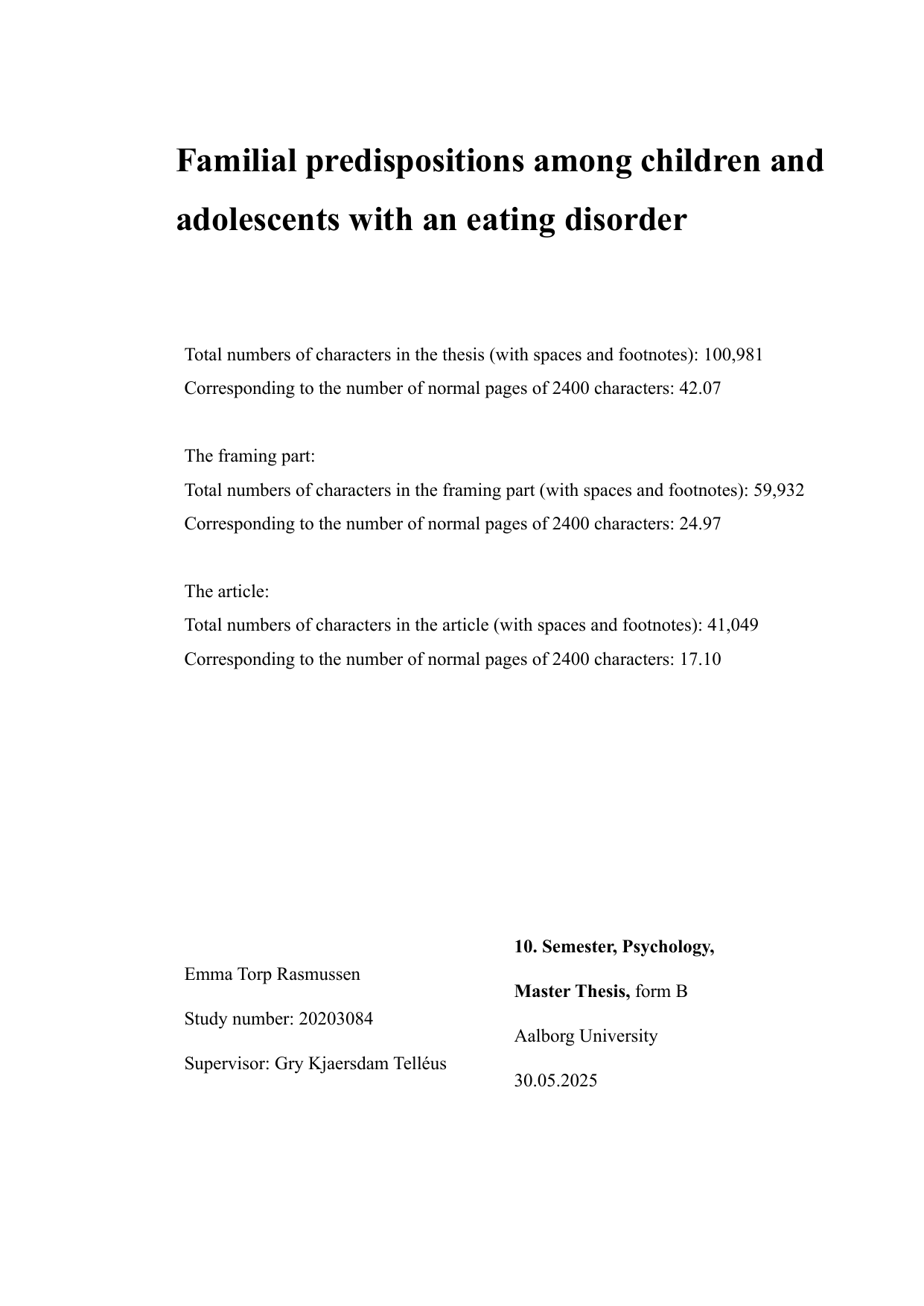
Familial predispositions among children and adolescents with an eating disorder: a retrospective cross-sectional study of prevalence, age of onset and symptom severity
Translated title
Familial predispositions among children and adolescents with an eating disorder
Author
Term
4. term
Education
Publication year
2025
Submitted on
2025-05-29
Pages
42
Abstract
Objective: Accumulated evidence from family, twin and molecular genetic studies indicate that eating disorders (EDs) run in families and are substantially heritable. This study aimed to assess the prevalence and impact of familial predispositions, as to whether the number of relatives and/or closer degree of relatedness (i.e., first-degree) would be associated with an earlier age of onset and greater illness severity in a clinical sample of children and adolescents. Method: This retrospective cross-sectional study included 282 children and adolescents assessed for an ED in a specialized ED unit at Aalborg University Hospital, Denmark. Results: A total of 84 children and adolescents had any familial predisposition to an ED, whereas 79 (94.05%) were females and five were males (5.95%). Sixty-one (72.62%) patients had at least one familial predisposition, while 23 (27.38%) had two or more familial predispositions. Fifty-two (63.68%) had ED-affected first-degree relatives, 23 (27.38%) had second-degree relatives and 30 (35.71%) had third-degree relatives with EDs. No significant association was found between fa- milial predispositions and the age of onset, global EDE score, or symptom duration. However, a tendency towards having two or more familial predispositions and a high global EDE score was found (95%CI [-0.07, 1.17]), which could have clinical relevance. Conclusions: A high prevalence of familial predispositions among children and adolescents was found. The findings suggest that having multiple ED-affected relatives may influence the severity of these disorders, emphasizing the importance of early detection and prevention programs among children and adolescents with EDs.
Documents
